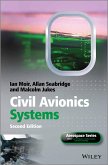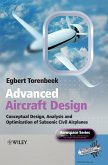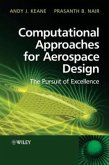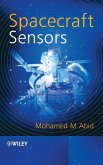Guide to Spacecraft Charging Effects is a single reference source containing both theory of spacecraft charging and suggested practical detailed spacecraft design requirements and procedures to minimize the effects of spacecraft charging and to limit the effects of the resulting electrostatic discharge.
Numerous equations provide a good theoretical background, and charts, graphs, figures, tables, and photos summarize and illustrate the theoretical background. Numerous appendices expand on the main text, a well thought-out index gives quick access to important concepts, and an extensive list of references provides further avenues of research for those wishing to extend their knowledge.
Much of the environmental data and material response information has been adapted from published and unpublished scientific literature for use in this document. It is the book form of the recently issued NASA Technical Handbook NASA-HDBK-4002A, March 3, 2011 (by the same authors). In particular, this book can be used as the textbook form of that Handbook and its earlier sources, NASA Technical Paper 2361, 1984, and NASA Technical Handbook NASA-HDBK-4002, 1999 (both co-authored by the current authors).
Since the original writing of the 2361 and 4002, there have been many developments in the understanding of spacecraft charging issues and mitigation solutions, as well as advanced technologies needing new mitigation solutions. The following topics are covered in Spacecraft Charging Effects:
Solar cell technology, especially higher voltage arrays, and the new design approaches that are appropriate for them
Information about the space plasma environment
New analytic computer codes to analyze spacecraft charging
Spacecraft anomalies and failures, which have emphasized certain designs that are of greater importance than others.
Hinweis: Dieser Artikel kann nur an eine deutsche Lieferadresse ausgeliefert werden.
Numerous equations provide a good theoretical background, and charts, graphs, figures, tables, and photos summarize and illustrate the theoretical background. Numerous appendices expand on the main text, a well thought-out index gives quick access to important concepts, and an extensive list of references provides further avenues of research for those wishing to extend their knowledge.
Much of the environmental data and material response information has been adapted from published and unpublished scientific literature for use in this document. It is the book form of the recently issued NASA Technical Handbook NASA-HDBK-4002A, March 3, 2011 (by the same authors). In particular, this book can be used as the textbook form of that Handbook and its earlier sources, NASA Technical Paper 2361, 1984, and NASA Technical Handbook NASA-HDBK-4002, 1999 (both co-authored by the current authors).
Since the original writing of the 2361 and 4002, there have been many developments in the understanding of spacecraft charging issues and mitigation solutions, as well as advanced technologies needing new mitigation solutions. The following topics are covered in Spacecraft Charging Effects:
Solar cell technology, especially higher voltage arrays, and the new design approaches that are appropriate for them
Information about the space plasma environment
New analytic computer codes to analyze spacecraft charging
Spacecraft anomalies and failures, which have emphasized certain designs that are of greater importance than others.
Hinweis: Dieser Artikel kann nur an eine deutsche Lieferadresse ausgeliefert werden.








